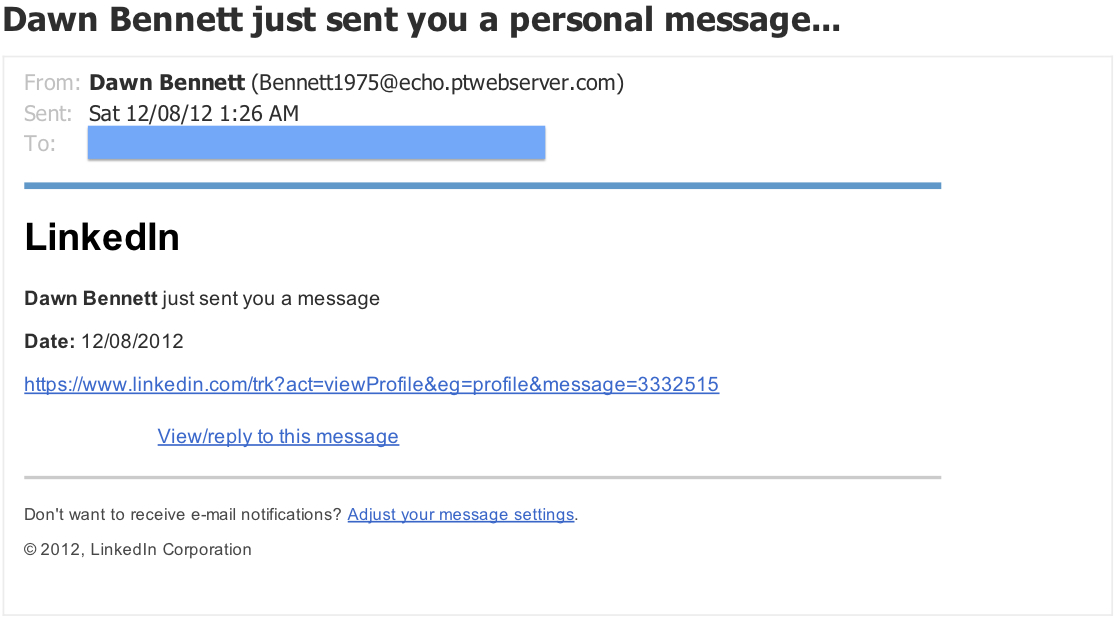By Scott Aurnou
‘Phishing’ attacks are designed to steal your personal, financial and/or log in information. This can be done in a few ways, including via email or text message (referred to as ‘smishing’). They often contain links to websites that look legitimate but are really there to steal your account log in information or host malware ready to attack your computer. These emails and messages can also be used to lure you into contact with scam artists posing as potential clients or officials offering to release substantial funds to you if only you would be so kind as to give them detailed personal information or a sum up front. Some of these attacks are actually very well crafted. Some not so much. And some border on the ridiculous. Each month at The Security Advocate, we will present a number of examples, along with explanations of what to look out for to avoid falling victim to one of the scams.

While this appears to be an innocuous LinkedIn message from someone not in the recipient’s contact list, it isn’t. On LinkedIn itself, there was no corresponding message in the account inbox. Of course, the email above does look quite accurate, but… So how do you avoid this particular trap? It’s actually fairly easy. Anytime you receive an email notification of an incoming message, etc. from any sort of social media site, just log in to the site directly to read it. Never use the web links found in the notification emails, and you won’t have to find out the hard way that they’re not what they appear to be.
Read more ›














